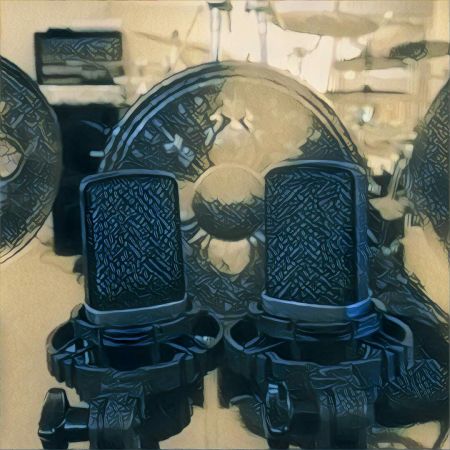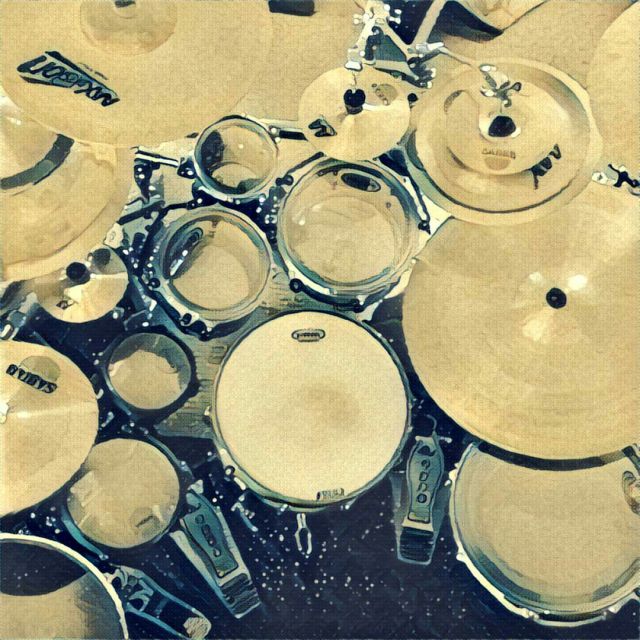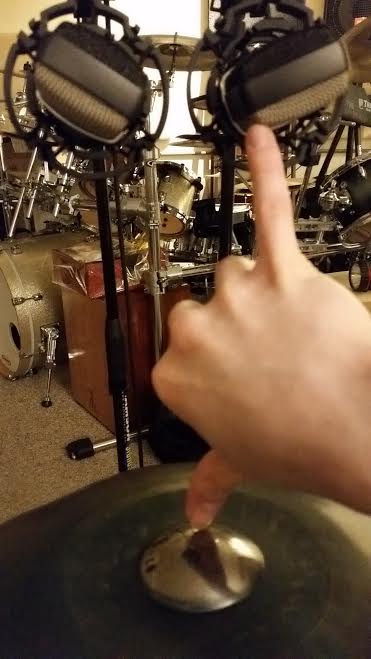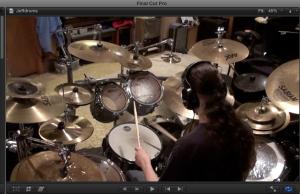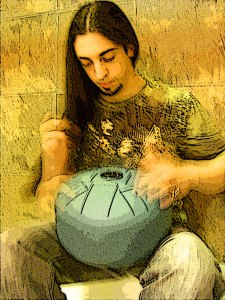
7×14 Cherry Segment Snare w/Black Nickel Hardware
Well a lot has certainly happened since my last post here – got engaged to my amazing fiancé, been in and out of three bands, and learned a lot about myself and my drumming in the process. Since I started working at Steve Weiss Music a couple years ago, I’ve got to know all of the specific things that go into a cymbal or a drum, and that helped me design my own custom snare drum (with some help!). I first had the idea to have a snare that would primarily be used with the snares “off” for that Danny Carey/TOOL sound, but later decided “why not just make an awesome snare all around, on and off?” So from there, everything pretty much fell into place. I had my eye on a custom drum maker who only works with segment shells (not stave, not ply), which really caught my eye, and had some incredible designs and wood combinations going on. So when I saw his company Addiction Drum Design was having a sale on snare shells up to 7″x14″, I jumped at the opportunity and went with that size because a more “beefy” sounding snare would fit well with my other drums and my playing. I chose Cherry wood because I had seen posts about other cherry drums he had made. “Nothing resonates quite like cherry”, is how he put it, so I was very curious at that point. I ran my ideas by him and he seemed to agree cherry would be the best fit. So that was ordered with the drilling, bearing edge, and finish extra. Now to gather all of my dream hardware…
Hoops:
I had my heart set on black chrome die-cast hoops after liking the sound of my Tama Spartan Warlord snare, which has die-cast hoops which work great for that drum. My Tama Starclassic Performer EFX drum set has die-cast hoops as well and they sound great. But then I got a small Yamaha Rock Tour drum set to take out to shows and rehearsals, and I loved how “open” those drums sounded because of their triple-flanged hoops. I still thought I would prefer the die-cast hoops for the new snare, so I began my search for the hook-up. One company who shall not be named gave me a rough ETA of January 2014, which was about 3-4 months longer than I had hoped to wait. The second company who shall not be named that I tried actually had the black chrome die-cast hoops in stock! …but would only export them OUT of the USA! So feeling a bit defeated and unimpressed with the percussion market, I almost went back to nameless company #1 to wait for the hoops until January 2014. But on a whim, I emailed Mapex, who shall be named because of their awesome customer service and prices. It just so happened that the guy I emailed said “I have those very hoops next to my desk here” and gave me an incredible price (which shall not be named on here). AND they are better than the typical die-cast hoops – they are Mapex’s SonicSaver Hoops, which combine triple-flanged and die-cast into exactly what I need for this snare! The part where the tension rod goes through looks like a triple-flanged hoop so it won’t choke up the drum like a die-cast hoop would, but instead of curving OUT at the top, they curve IN, resembling the thicker die-cast hoops for that incredible rimshot – They also look badass in a brushed black nickel finish! That was SUCH a huge relief finding out about those hoops, and after trying them out, I am definitely a fan!
Lugs, Throw-off, Tension Rods, Air Vent Grommet, Snare Wires:
I wanted to stay with the black nickel hardware look, and I also wanted this drum to be completely unique, so I went with the Arch2 lugs from Drum Foundry, which look amazing. Drum Foundry also had the RCK throw-offs, which I was referred to over the Trick throw-offs by someone who’s had experience with both. Adding the black nickel RCK throw-off and butt plate, as well as Dynamicx snare wires, I was almost all set! Black tension rods (w/black plastic washers) and a black chrome air vent grommet was an easy find from Drum Factory Direct.
But now, which heads?
Evans, of course! Because I really love the way my Tama Spartan Warlord sounds, I thought I wanted the same heads on there – a Genera Coated on top, and a Hazy 300 on the bottom, but stainless steel is WAY different than cherry, so the Power Center Reverse Dot head on top opened it up a bit more for the sound I was looking for. It has a great feel and a huge sound – Better than what I was hoping for! With the snares off, it has a beefy tribal sound that sings beautifully with the right amount of overtones thanks to the 45 degree bearing edges, and with the snares on it has an old school lo-fi kinda phat sound (when tuned lower, but I usually keep it pretty cranked up), plus you can still hear the deep tone of the drum – so its a win/win! Ghost notes sound sneaky and playful, not too dead, and the snare response is great from the Dynamicx snare wires along with the Hazy 300 bottom head.
Oh yeah, and throw a shorter snare stand in there too…
Had to buy a shorter snare stand because of the 7″ depth, so the drum wouldn’t sit too high for me to play comfortably.
While there are no recordings with this drum yet since I just assembled it yesterday 11/18/13 (but I did write some great new stuff with it today!), here are some pictures all throughout the assembly phase, as well as the finished product. Very excited to share with you all!
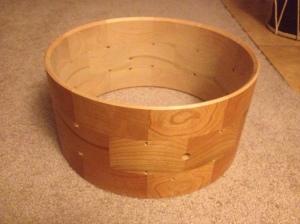
Shell – 7″x14″ Cherry Segment, by Addiction Drum Design

Shell with Arch2 lugs from Drum Foundry
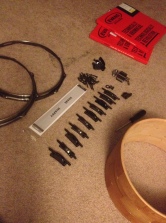
Some assembly required.

All put together
 New snare added into the rest of the studio set.
New snare added into the rest of the studio set.


